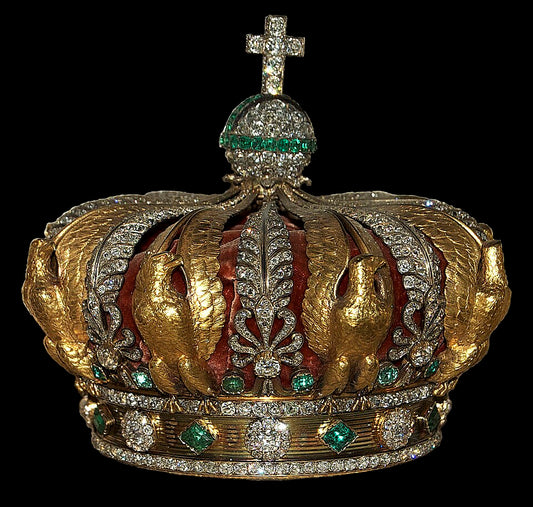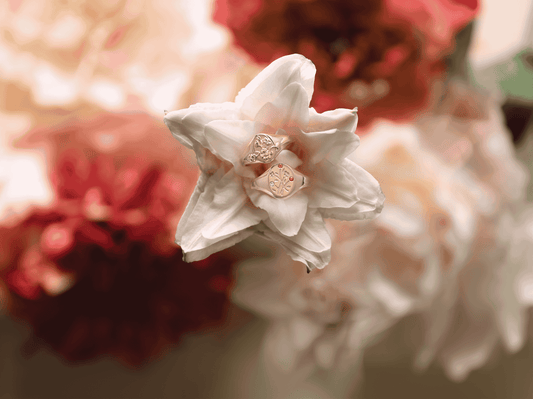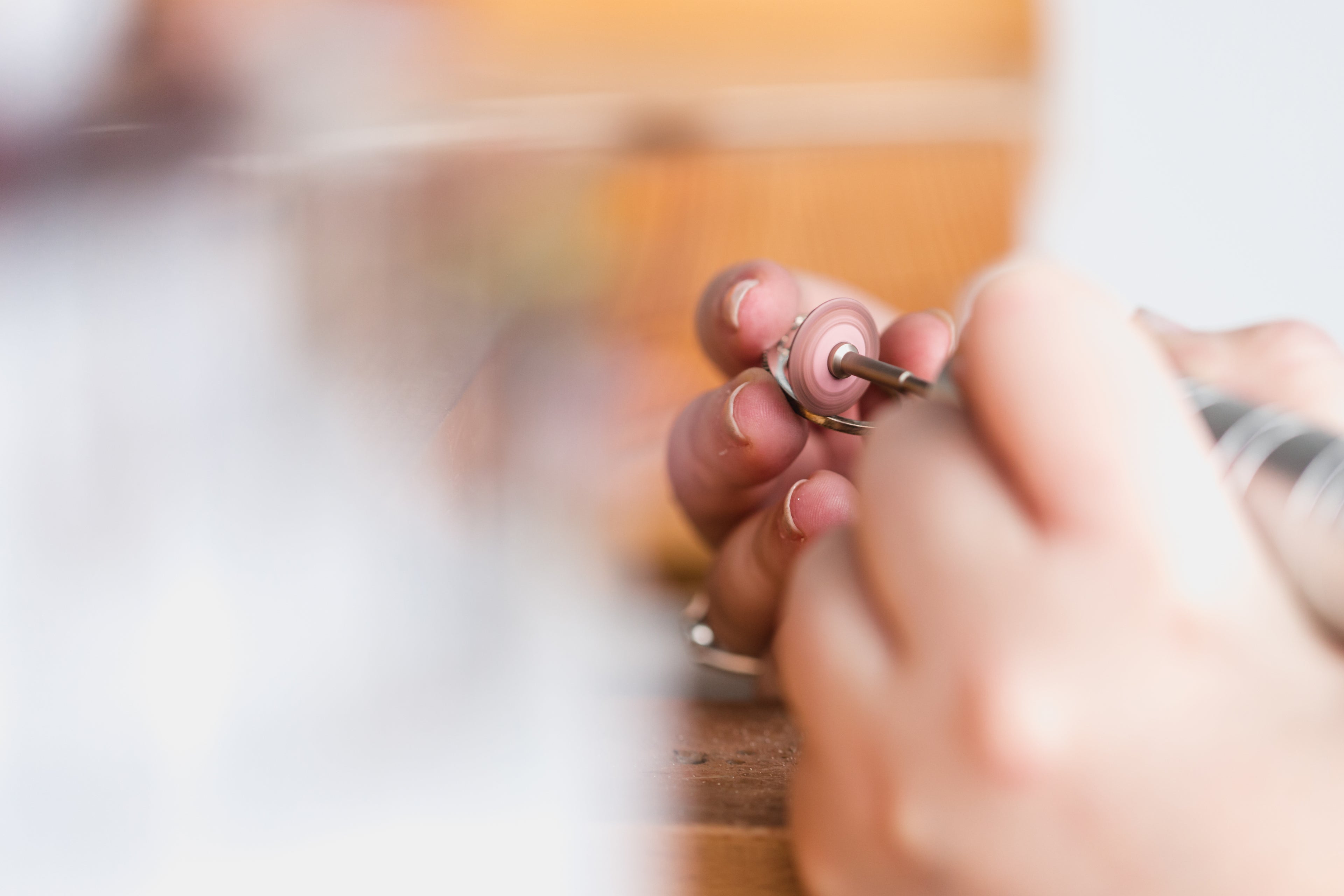As we all know, the allure of a piece of jewelry isn't just in its sparkling gems or intricate designs. It's also in the story it tells— a story often written in tiny, almost invisible markings known as stamps or hallmarks. These minuscule engravings are far from decorations; they are your key to understanding a piece's history, quality, and authenticity. In this comprehensive guide, we'll dive into the fascinating world of jewelry stamps and metal hallmarks. So, let's unravel the language of jewelry together, shall we?
What Does A Stamp Mean On Jewelry?
Jewelry markings, often referred to as hallmarks, are a set of symbols, numbers, or letters that serve as the DNA of a piece of jewelry. They can reveal various features, such as the metal type, origin, age, and even the manufacturer. These stamps are commonly found on rings, pendants, and bracelets, usually located on the back or the interior of the jewelry.
Why Should You Care?
Understanding these markings not only adds a layer of assurance for you, the buyer, but also serves as an indispensable tool for those interested in heirloom redesign or custom jewelry creation. Knowing how to read these stamps and hallmarks ensures you are investing in a piece that aligns with your desire for quality, and can be passed down to enrich your family legacy.
The Rich History of Jewelry Stamps
Jewelry stamps have a long and storied history, dating back centuries. They originated as a way to ensure quality and authenticity in the trade of precious metals. In England, the hallmarking system began as early as the 1300s. Goldsmiths were required to register their stamps with the Goldsmiths' Company and the London Assay Office. This system, which used a combination of symbols, numbers, and letters to indicate precious metal purity, maker's mark, and year of manufacture, was later adopted by other countries, including France, Germany, and the United States.
A Global Standard
Today, jewelry stamps have become a global standard, serving as an essential part of the manufacturing process to ensure the quality and authenticity of individual pieces. They have evolved to include not just information about metal type and purity, but also origin and manufacturing details.
Decoding Different Types of Jewelry Stamps
These stamps indicate the purity of the metal used in the jewelry. For example, '925' signifies 92.5% pure silver, usually combined with another metal like copper for durability.
Maker's Marks
These stamps identify the jewelry designer or artist who created the piece. Manufacturers often use their logo, while artists and designers may use their name or initials.
Location Stamps
These marks identify the origin of the piece, often indicating the country or specific region where the jewelry was made.
Gold Purity Stamps
Gold purity is indicated by stamps like 10K, 14K, 18K, and 24K. It's crucial to note the difference between carats (used for gems) and karats (used for metals):
10K or 416: 41.6% pure gold
14K or 583 or 585: 58.3% pure gold
18K or 750: 75% pure gold
24K: 100% pure gold
Platinum Identifier Stamps
These markings, such as '900 Platinum' or 'Pt900,' indicate that the jewelry contains 900 parts per 1000 of platinum. Platinum is often combined with palladium or rhodium, and the percentage of these metals will be indicated by additional stamps like 'PD.'
Gold Plating Stamps
Stamps like 'GE' (gold electroplated) or 'GP' (gold plated) indicate that the piece is coated with a layer of gold. One mark that is not to be confused with plated gold is 14kP, which is a rare marking which designated 14k gold Plumb, meaning that the alloy is no less than 58.3% gold.
Stainless Steel Stamps
These marks indicate that the piece is made from stainless steel, a hypoallergenic and affordable metal.
Antique Stamps
These usually begin with a capital 'A' and may be accompanied by other letters to indicate the type of finish or plating used.
How to Read Stamps and Hallmarks
Reading these markings often requires a magnifying glass and some patience. They are usually located on the inside of rings, the clasps of necklaces, or the backs of pendants and earrings. Start by identifying the numbers for metal purity, then look for the trademark and any special symbols that can offer insights into the piece's history or origin.
Expert Tip:
If you find yourself struggling to decode these markings, don't hesitate to reach out for a virtual consultation. At Stradley & Daughter, we offer appraisals, custom design, and heirloom restyling services to help you understand and enjoy your piece better.
Tips for Those with a Passion for Heirloom and Custom Jewelry
If you're someone who cherishes the past and is keen on creating a future legacy through jewelry, knowing how to decode these markings is invaluable. They can aid in your journey of heirloom redesign or custom jewelry creation, ensuring each piece carries its history forward authentically.
Conclusion
Jewelry stamps and metal hallmarks serve as silent storytellers, providing a wealth of information in their tiny forms. Understanding these markings is essential for anyone interested in the beauty, legacy, and authenticity of a jewelry piece. So, the next time you find yourself marveling at a piece of fine jewelry, take a moment to look closer. Its story may run much deeper than its sparkling surface. These markings can be a gateway to a rich history, a stamp of quality, and a mark of authenticity. They can also be your first step in creating a new legacy through heirloom redesign or custom jewelry creation.
At Stradley & Daughter, we understand the importance of every detail in a piece of fine jewelry. That's why we're here to help you decode these fascinating markings and understand your jewelry's unique story. If you have any questions or would like to learn more, feel free to book a virtual consultation with us. We offer appraisals, custom design, and heirloom restyling services tailored to your needs.
So go ahead, take that magnifying glass and discover the hidden world engraved on your precious pieces. And remember, the beauty of fine jewelry isn't just in how it looks, but also in what it signifies.
Disclaimer : This article is for informational purposes only and should not be considered as professional advice. Always consult with your jeweler for personalized guidance.









